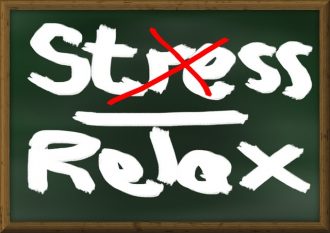Staying focused at work can become a difficult task when you workplace is hectic and chaotic. Yes, it does come with the territory – loud equipment, people walking by, loud discussions, deadlines, busy schedules, and clutter, but all of that can be cultivated so that it doesn’t have to stress you out. Even the slightest changes can become leveraged strategies to stay focused when your workplace isn’t zen.
According to a 2015 study conducted by Plantronics, office noise has an adverse effect on office workers and the quality of their work. Furthermore, open office environments are causing serious noise challenges for individuals and their colleagues, undermining productivity.
So how do they focus on work when the environment is chaos like Disneyland on Friday night? To begin with, roughly 60% of the respondents in this research stated that listening to music with a headset helps to minimize the noise and allow for more genuine focus.
Maybe you’re like me and find music is more distracting than helpful to get my zen on.
Well then I’ve got more strategies you can try.
7 Strategies to Stay Focused at Work
1. Schedule A Meeting With Yourself
By scheduling a “meeting” with yourself you prep your brain in advance for ‘focus’ time. This strategy to stay focused can either be done to reorient your priorities by making a list of tasks that needs to be completed based on importance or by having a meeting with yourself where you focus on one project at hand. This time that you set aside can help take the pressure off and allow you to get the most urgent things done quickly rather than focusing on smaller tasks. Scheduling some time to ‘meet’ with yourself will increase productivity because you are more organized and ready to tackle your work with a clear mind.
2. Shift Into Low Gear And Stay There
Put yourself in a mindset where you won’t become overwhelmed with moving from one urgent tasks to the next. Work on the smaller or important tasks first thing in the morning or after lunch before you dive into the urgent tasks. It’s important to give yourself plenty of time. Working in short bursts can be a valuable tactic to implement right before you get deep into the urgent work.
3. Take Short Breaks
Go on a short walk outside, mediate, read, or do something that can help relax your mind and get your work flow going. Short breaks can help shift your mind into a more creative mode where you can start thinking strategically. Instead of committing to working hours straight which can be overwhelming, tell yourself that you will work for 25 minutes and then take a short break to refocus and start again if needed. This is called the Pomodoro technique.
4. Designate A Place For Focusing
Create your space. Find a location that is comfortable for you to work. For some this is difficult to do but for others if you have the option it’s a great way to start fresh. It could be at a coffee shop, booking a conference room, or working from home. For example, avoid working on non-urgent projects when you’re working in a conference room can help train your brain in advance on what it needs to focus on. By associating a certain location with a project, getting work done can become easier and less overwhelming. Advanced preparation of your mind can be very helpful at achieving success.
5. Step Away From Your Computer
This may not be practical for most people as computers are essential, but just like associating a location with mental activity, being in front of a screen can unconsciously influence a certain style of thinking and can be more of a distraction. Sometimes going old school is the best way to do it. Grab a white board and draw or jot down your ideas. By not having the distractions of the computer or internet this can help you concentrate only on the task at hand and help you reach your goal faster. Some strategies to stay focused are simple and nothing could be easier than taking a break.
6. Toggle Between The Important And The Urgent
If you have numerous deadlines coming up all at once and don’t know where to start, toggling between tasks may be something to look into. This can be done by completing a major step in an urgent task and then doing the same on a smaller one which can help get the ball rolling. Although this may not be an ideal way to complete projects, it can help get you started. Of course, you’ll want to keep moving so you avoid decision fatigue.
In step 3 the Pomodoro technique was mentioned. This could also be implemented here. You could work on an urgent project for about 30 minutes, take a short 10 minutes break and when you come back start a less-urgent task for another 30 minutes and continue to rotate until completion.
7. Enlist Positive Peer Pressure
The final strategy is to recruit a colleague to hold you accountable. In a busy environment, we’ve established that it can be hard to focus and by having someone who can hold you responsible can help drive you to tackle those urgent projects right away. Another option would be to set-up various follow up meetings with your boss (making sure they are effective meetings) to present status updates on the project. By being held accountable it can motivate you to get things done no matter how hectic it can be.
Just because your desk is a mess and your schedule is packed, you don’t have to feel overwhelmed. By implementing these 7 strategies or even just one, you’re bound to be less stressed. Just take a deep breath and once you’re mind is at peace and your projects are organized you can have a more productive work vibe.
What strategies to stay focused do you use in your hectic workplace environment? Share your tactics and help out your fellow professionals to reach that state of focus too.
Seven Strategies for Regaining Your Focus in a Hectic Workplace | LifeHacker


